- Step-by-step procedures
- Estimated completion time
- Resources labeled by icons






 direct teachers to the piece of content named in the procedures
direct teachers to the piece of content named in the procedures - Print-ready pages as indicated by
 are available as PDFs for download
are available as PDFs for download
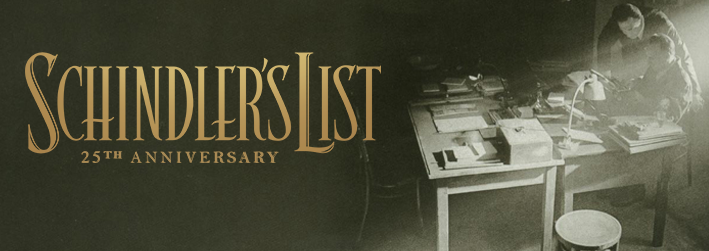
In honor of Universal Pictures’ rerelease of Schindler’s List, Echoes & Reflections has created a short, classroom-ready Companion Resource, that will help educators to provide important historical background and context to the film, as well as explore powerful true stories of rescue, survival, and resilience with their students.
Additionally, the following videos, recorded at Yad Vashem, feature Schindler survivors who speak of the impact Oskar Schindler had on their lives.
EVA LAVI TESTIMONY
NAHUM & GENIA MANOR
The posters feature the powerful words and experiences of Holocaust survivor and memoirist Elie Wiesel, Holocaust survivor Kurt Messerschmidt, and Anne Frank rescuer, Miep Gies. Each poster promotes meaningful conversation and reflection in the classroom, whether in person or in a virtual setting, and inspires students with powerful human stories of the Holocaust that can continue to guide agency and action as a result of studying this topic.
To support you in these efforts, we have also compiled several suggested classroom activities from teachers in our network that may be of use and interest.
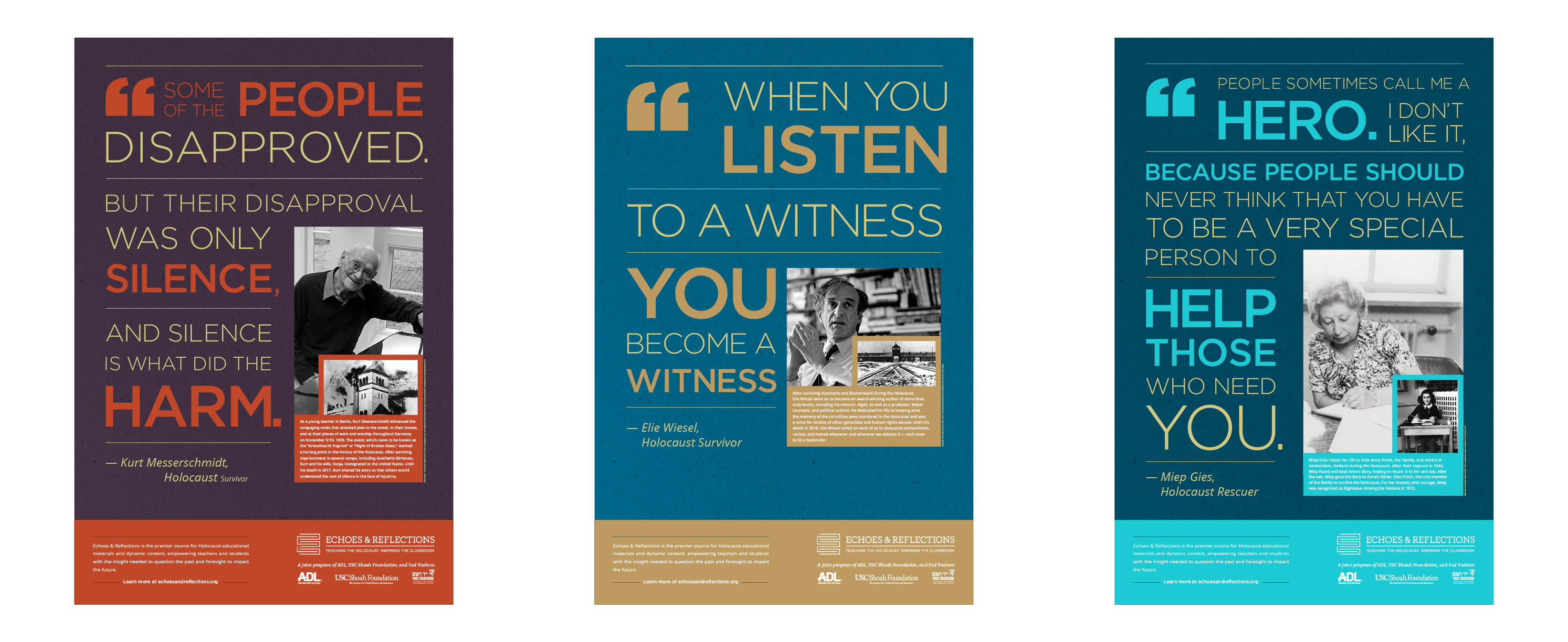
Please fill out the form below to access and download your PDF posters.

USC Shoah Foundation’s first podcast, We Share The Same Sky, seeks to brings the past into present through a granddaughter’s decade-long journey to retrace her grandmother’s story of survival. We Share The Same Sky tells the two stories of these women—the grandmother, Hana, a refugee who remained one step ahead of the Nazis at every turn, and the granddaughter, Rachael, on a search to retrace her grandmother’s history.
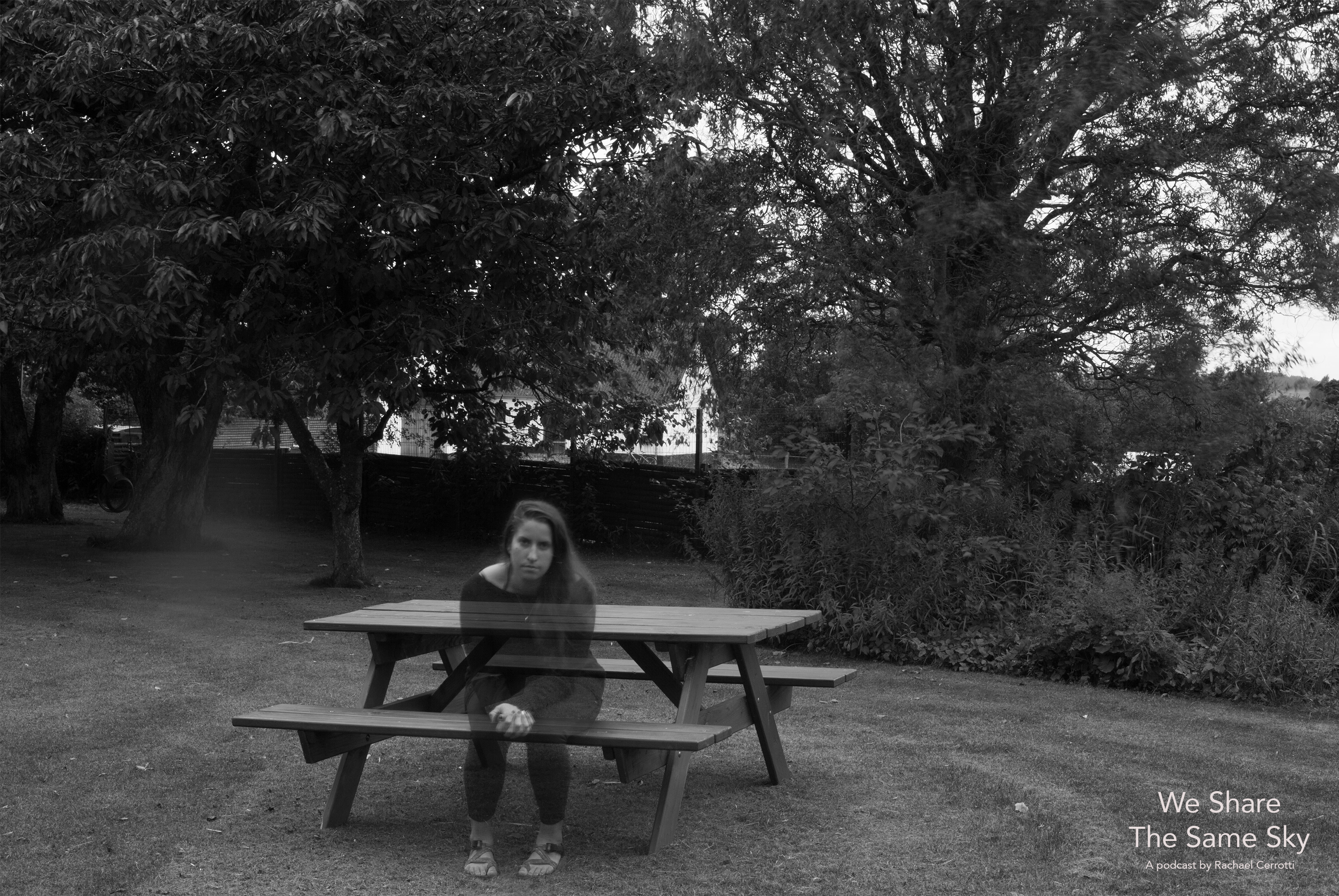
A self-portrait of Rachael while she is living on a Danish farm that is owned by the granddaughter of Hana’s foster mother from World War II. Photo by Rachael Cerrotti, 2017
In order to enhance its classroom use, USC Shoah Foundation and Echoes & Reflections have created a Companion Educational Resource to support teachers as they introduce the podcast to their students. This document provides essential questions for students, as well as additional resources and content to help build context and framing for students’ understanding of the historical events addressed in the podcast.
Access to the podcast, as well as additional supporting materials—including IWitness student activities, academic standards alignment, and general strategies for teaching with podcasts—can all be found at the We Share The Same Sky page in IWitness.
Note: Due to the subject nature, the podcast is appropriate for older students, grades 10-12. As always, teachers should review the content fully in advance to determine its appropriateness for their student population.

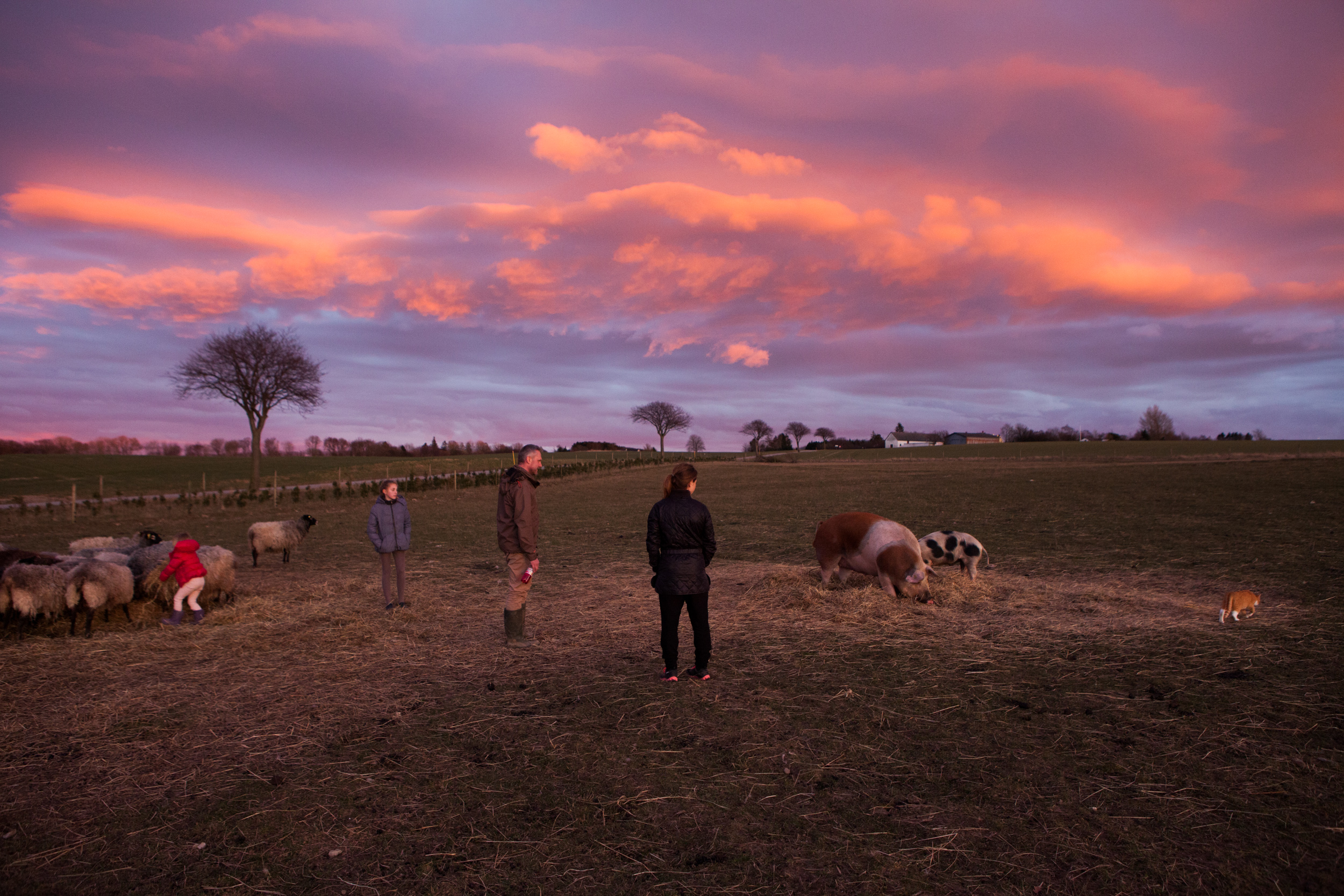
After many years of research and digitizing the archive her grandmother left behind, Rachael set out to retrace her grandmother’s 17 years of statelessness. Her intention was to travel via the same modes of transportation and to live similar style lives as to what her grandmother did during the war and in the years after. That meant that when she got to Denmark, she moved to a farm. Rachael moved in with the granddaughter of her grandmother’s foster mother from World War II and traded her labor for room and board as Hana once did. This picture is from that first visit in the winter of 2015. Since this time, Rachael has spent many more months living on this farm. It is owned by Sine Christiansen and her family. Sine is the granddaughter of Jensine, one Hana’s foster mother from World War II. Photo by Rachael Cerrotti, 2015

A self portrait of Rachael overlooking the exact spot in Southern Sweden where her grandmother’s refugee boat came to shore in 1943. Photo by Rachael Cerrotti, 2016


120 Minutes
LESSON 2: Spiritual Resistance: Attempting to Preserve Humanity in the Face of Inhumanity
In this lesson, students consider how dehumanization made the Final Solution possible. They examine texts and testimony that delve into the theme of dehumanization from the perspectives of both a perpetrator and Jewish survivors. Students also interpret a variety of primary sources – including poetry and art – that deepen their understanding of spiritual resistance and how some people attempted to cope with and respond to Nazi atrocities.
| 1 | Students brainstorm and note on the board a list of the things that make them feel human (e.g., satisfying basic needs such as nutrition, health, and shelter; emotions; relationships; self-expression; autonomy; social and cultural belonging; learning; laughing; leisure). |
| 2 | Based on their list, the class comes up with a definition for dehumanize (e.g., to deprive someone of human qualities; to take away their dignity or make them feel less than human). The definition is posted and students are prompted to consider the following questions as they engage with the materials in this lesson:
|
| 3 | In pairs, students read the Interview with Franz Stangl and Excerpt from Survival in Auschwitz. They think about how dehumanization made the Final Solution possible from the perspectives of both a perpetrator and a target of Nazi hate. Pairs select one phrase from each reading that most reflects this dehumanization for them. The class engages in a read-around, in which students choose one phrase to read aloud. |
Interview with Franz Stangl View More »
Excerpt from Survival in Auschwitz View More »
| 4 | Students watch a testimony clip of a Jewish survivor who discusses her daily life at Auschwitz: [L]Itka Zygmuntowicz[/L]. As they watch the clip, students reflect on the theme of dehumanization and take notes on The One or Testimony Reflections handout. |
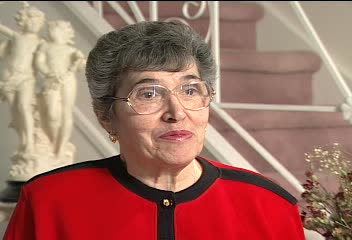
| 5 | After reading the texts and viewing the testimony clip, students participate in a whole group discussion in response to some of the following questions: |
|
|
| 6 | In small groups, students interpret primary sources that reflect how some people coped with and responded to Nazi concentration and extermination camps. Stations are set up with the sources below. Students analyze at least two of these sources by discussing the accompanying prompts with their groups, and by continuing to record their reflections on The One handout.
|
Poems from a Camp Survivor View More »
View More »
Appell, 1944 View More »
Life in the Shadow of Death View More »
| 7 | The class debriefs the station exercise using the questions below. |
|
|
| 8 | Students continue to explore the idea of spiritual resistance through the following sources and take notes on The One or Testimony Reflections handout as they view/read:
|
| 9 | The class debriefs using some of the following questions: |
|
|
| 10 | As a summative task, students return to Elie Wiesel and react to the following quote:
|
The ideas below are offered as ways to extend the lessons in this unit and make connections to related historical events, current issues, and students’ own experiences. These topics can be integrated directly into Echoes & Reflections lessons, used as stand-alone teaching ideas, or investigated by students engaged in project-based learning.
| 1 | Visit IWitness (iwitness.usc.edu) for testimonies, resources, and activities to learn more about life in the camps, Babi Yar, the Einsatzgruppen, and other topics associated with the “Final Solution.” |
| 2 | In her testimony, Itka Zygmuntowicz recites the poem she wrote in Auschwitz—a poem about freedom. Many children (and adults) used art as a way to spiritually survive the experience of the ghettos, and in some instances, the extermination camps. Write about the importance of the arts in your life and how music, painting, writing poetry, or something similar has helped you during a particularly difficult time. |
| 3 | Throughout this unit, you have considered an important question regarding the Holocaust: How was the Holocaust humanly possible? Respond to this question in light of the material you have studied. |
| 4 | Review the Pyramid of Hate handout and consider whether “genocide” should be added to the top of the pyramid or if there are other changes to the graphic that are warranted based on your study of the Final Solution. Prepare a revised “pyramid of hate” or a completely different graphic representation that you feel more accurately depicts the escalation of hate. The revised graphic should be accompanied by a short explanatory text that explains the reasoning behind adding genocide to the top of the pyramid, changing the graphic entirely, or keeping it as is. |
| 5 | A diverse array of art was created during the Holocaust. Some pieces were sanctioned by camp or ghetto authorities for propaganda purposes or for the personal satisfaction of Nazi officials. Other art was created secretly and at great risk to the artists’ lives. Thousands of these clandestine pieces were discovered in ghettos and camps after liberation. Artists who survived the Holocaust also created works following liberation to document their experiences and interpretations of the Holocaust. Research and identify one piece of art created during or after the Holocaust that is meaningful to you. Create a multimedia presentation in which you display and interpret the artwork, provide background about the artist and circumstances under which the piece was created, and share why you chose it. Possible artists to research include Felix Nussbaum, Fernand Van Horen, Yehuda Bacon, Esther Lurie, Alexander Bogen, Hirsch Szylis, Charlotte Salomon, Samuel Bak, Bedrich Fritta, and Petr Ginz. Refer to the Yad Vashem website for additional information (yadvashem.org). |
| 6 | Research one of the topics below and prepare a presentation, in a format of your choice, on what you learned. Include information about at least three of the six extermination camps — Auschwitz-Birkenau, Belzec, Chelmno, Majdanek, Sobibor, and Treblinka. Consult primary source materials as part of your research. Useful sites include Yad Vashem (yadvashem.org), IWitness (iwitness.usc.edu), and the United States Holocaust Memorial Museum website (ushmm.org).
|
| 7 | There are many films and novels that are set during the Holocaust, some based on true stories with fictional elements and others entirely fictional. Many of these works contribute positively to Holocaust education by raising awareness, evoking emotion, and inspiring reflection. Some, however – despite being labeled as fiction – present historical inaccuracies that can lead to a flawed understanding of the Holocaust. With this problem in mind, analyze a Holocaust novel or film that you’ve read/viewed before or choose a new one from the list below. Draft questions that help you to evaluate the accuracy of the story, for example the chronology or timeline of events, the language used to describe events, the way people are portrayed, the setting or location of events, etc. Note potential inaccuracies in the story and research them. Then write a brief report summarizing your findings and discussing the benefits and challenges of using fiction to learn about the Holocaust.
|
dehumanizationEinsatzgruppen
European Jewryextermination camp“Final Solution of the Jewish Question”
Nazi ideologyperpetratorReich
Roma
SS
TheresienstadtTreblinka





